Israeli leaders are currently posturing for and threatening a wider war by invading Lebanon. I have heard several people state that Hezbollah ‘could flatten’ Tel Aviv. I have heard it enough that I wanted to take a look at the potential damage that Hezbollah could inflict upon israel. I researched the weaponry available to Hezbollah & used it to create a relatively simple simulation which is described below. I use ‘rocket’ and ‘missile’ interchangeably here despite there being differences between the two.
The Iron Dome
The Iron Dome Has had an intercept rate as high as 90% in 2021 and gone down to as low as 57% in 2022 & 37% in 2023[1]. It is important to note that MANY of these aren’t failures, simply the system let them by as they were ‘unlikely to cause damage’. There are other systems involved in israeli missile defense but the figure above seems to include these integrated systems. In terms of effectiveness there are two things that come to mind. First, there is a difference between a ‘homemade’ rocket used by Hamas and professionally made ones used by forces like Hezbollah and state actors. Second, when looking at the history of rocket attacks, most are less than 5 rockets launched in a day. PEAK intensity rocket attacks are less than 500 a day on average.
Hezbollah
Many of us have heard of Israel ‘evacuating Northern Israel’ In reality they evacuated only a small portion of those who live in the North. The evacuated towns all lie within about 1.25 miles (2km) of the border with Lebanon [2]. There are also repeated calls for Hezbollah to remain north of the Litani river (roughly 20 miles from the southernmost areas of Lebanon). The goal there seems to be to keep israelis out of the range of Hezbollah’s SHORT range rockets. It is possible that sticking to ‘short range’ rockets is a particular level of escalation whereas using longer range would be a different level of escalation. Below is an image of 3 circles with the center point in southern Lebanon. The radius corresponds to the range of short, medium and long range weaponry. There are multiple types of rockets/missiles in each range category so the numbers used in the visualization & the simulation below are ‘within the range’ of each class.
Weapon armament
The below armament information is from the Jerusalem Post[3] additional details including warhead size from CSIS [4].
40,000 short range ~10 mile range
50-120 kg warhead (90 is used in the simulation)
80,000 medium range ~45 mile range
45-90kg warhead (90 is used in the simulation)
40,000 long range ~180 mile range
500kg warhead
reference
as a point of reference the Qassem Rockets that Hamas fires have a 5-10kg warhead[5]
The chart below shows the damage caused by warheads of various sizes[6]. I would say much of what we see in Gaza is level 1 & 2 damage. The simulation uses level 4 damage.
Notable areas/locations
These were pulled by googling ‘military base’, ‘air base’ , ‘naval base’. The area was calculated using google maps ‘measure' feature. For airbases, area used was the runway areas.
Simulating Destruction
This is not a ‘war game’ I don’t have various scenarios playing out or ‘role players’ deciding where to move troops, what actions to take etc. This is a simulation, it is based just on math as described below.
In basic terms. To start, I take the area of a ‘target’, say 1 square mile. I divide this by the blast radius of the rocket (for simple math’s sake say it is .01). So our ‘dart board’ will have 100 ‘spaces’. I then simulate ‘darts’ (rockets/missiles) landing randomly on the board (while accounting for 80% to be intercepted). I consider the location ‘destroyed’ when all of the spaces on the dart board are filled. I ran the simulation 100 times for each ‘target’ and recorded the average number of rockets/missiles required to ‘destroy’ the target.
Flaws of this simulation include (but are not limited to!):
it doesn’t account for the fire rate of Hezbollah, nor does it count for their degradation by Israeli response (i don’t think they can fire 30,000 rockets at the same time but i don’t know what the number is)
It assumes ALL fired rockets land within the target area, for larger targets, this is probably fine, but smaller airbases is probably less accurate
accuracy of these weapons is measured in Circular Error Probability (CEP)
The Fateh-110 which i classify as ‘long range’ have a CEP of 1640ft [7], meaning most of them will land within 1640ft of their intended target
If widespread damage is inflicted, Israeli intercept rate will likely decrease, that is not accounted for here
The ‘dart board’ method of this simulation is overly simplistic, I am not very familiar with geo-data but will look at that as a method of improving future iterations.
Again, want to highlight that this is very simplified, but its still an interesting simulation to assess the viability of frequently made claims. I might iterate on this as I figure things out to improve and update it.
Tel Aviv
Based on the simulation, launching ~33,000 long range missiles would effectively destroy Tel Aviv AND the surrounding cities (Petah Tikva, Ramat HaSharon, Herzliya, Ramat Gan, Holon, Bat Yam). Strategically, I don’t think this would be done due to the high cost, but in theory it is possible as many have claimed. To any who would argue this is a valid target/option, I’d suggest you read ‘Guarding Your Humanity’.
Airbases
As for probable targets, I think airbases would probably be high on the list. If an airbase were bombed thoroughly, I am not sure how long it would stay down. In an instance where we bombed a Syrian Airport, jets were reportedly taking off hours later [8]. According to a Syrian pilot who defected to Jordan “if only the tarmac was destroyed it can be fixed within hours, but if the communications system and the control tower were heavily damaged it will take weeks if not months” [10].
Military Bases
I know VERY little about the specifics of these bases, they are what showed up when you google ‘Israeli military bases’. There were around 12 in the Tel-Aviv area so I just did a square mile for each. The ports are also of obvious strategic value. Interesting to note the SIGNIFICANT amount of medium range rockets required to ‘destroy’ the port in Haifa, this is because I used a 90kg warhead for medium range rocket damage estimation vs the 500kg warhead for the long range munitions.
Summary
Based on this simulation (please refer again to the ‘flaws’ above), Hezbollah has enough weaponry to cause SIGNIFICANT damage within Israel. Despite the large target list and high munition cost (seen below), Hezbollah would still have munitions remaining (~14,000 long range missiles, ~31,400 medium range, 37,700 short range).
So why would Israel threaten a wider war? I think their own analysis shows that Hezbollah could cause significant damage. They want to ‘strike first’ to degrade Hezbollah’s capability and (in their minds) mitigate damage to israel. Additionally, forcing a wider war may be seen as a way to encourage direct involvement by the United States. A third reason is of pure political nature, Netanyahu faces the risk of significant consequences for his many failures when the ‘war’ is over. As pressure mounts against the ongoing genocide in Gaza, he may see Hezbollah as a means to continue the war and thus his career.
Conclusion
I’ll close this by again saying this simulation is very simple, it is not complex enough to cover all or even many of the variables. This is a high level assessment of the claims of Hezbollah’s destructive capabilities. In regards to those claims, I would say they are plausible, Hezbollah’s armament is significant. The presence of large 500kg warheads is the ‘game changer’ between the small rockets we usually see fired into israel and the larger ones Hezbollah has access to. This is highlighted when you look at the number of medium range ~90kg rockets needed to destroy the Haifa Port area vs the port of Ashdod which is only in range of the 500kg rockets (remember, Hamas has ~5kg rockets). Assuming even half the level of damage estimated here were possible, a war between Hezbollah & Israel poses a risk for significant damage to Israel. This risk to Israel comes with inherent risk to Americans as our “leaders” may feel inclined to ‘intervene’ putting American lives on the line once again for a foreign nation. A ceasefire in Gaza & a two-state solution is the best way to avoid this scenario & in the best interest of all parties.
Resources
https://www.csis.org/analysis/hezbollahs-missiles-and-rockets
https://odin.tradoc.army.mil/WEG/Asset/Qassam-1_Palestinian_Short-Range_Rocket
https://unsaferguard.org/un-saferguard/blast-damage-estimation
https://www.twz.com/this-is-hezbollahs-arsenal-of-weapons-it-could-rain-on-israel
https://www.jewishvirtuallibrary.org/jsource/arabs/hiz/part3.pdf
Simulation was done in python using standard libraries


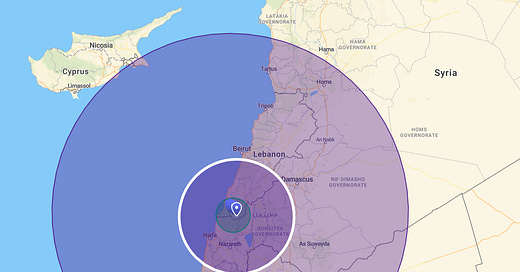




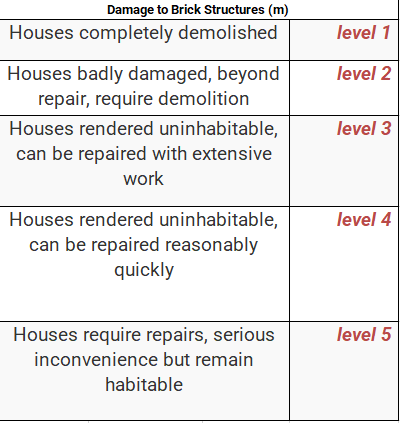
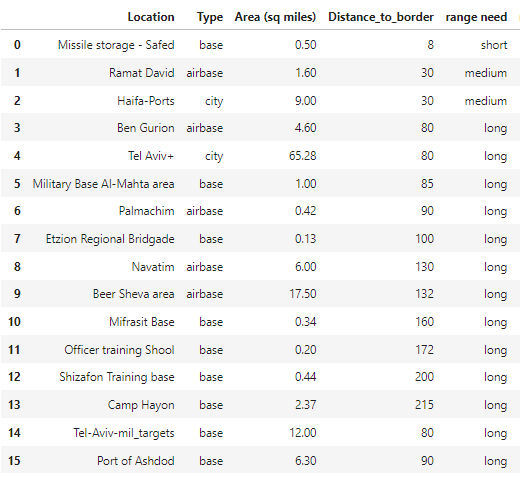


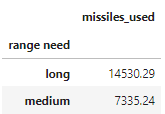
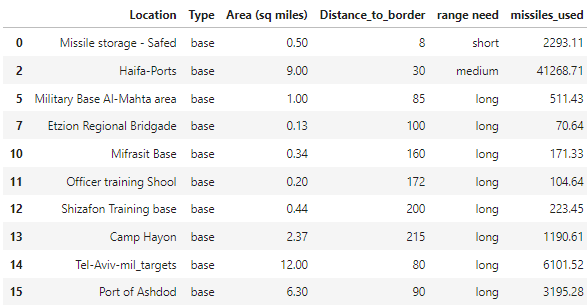
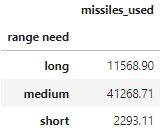
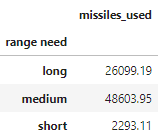
Israel has exposed themselves as a force for genocidal evil. Their enemies will not rest until they can no longer plague mankind with their butchery.
No Total destruction of Israel and the eventual removal of Jewish power in America via being bought out by BRICS is the only final solution.